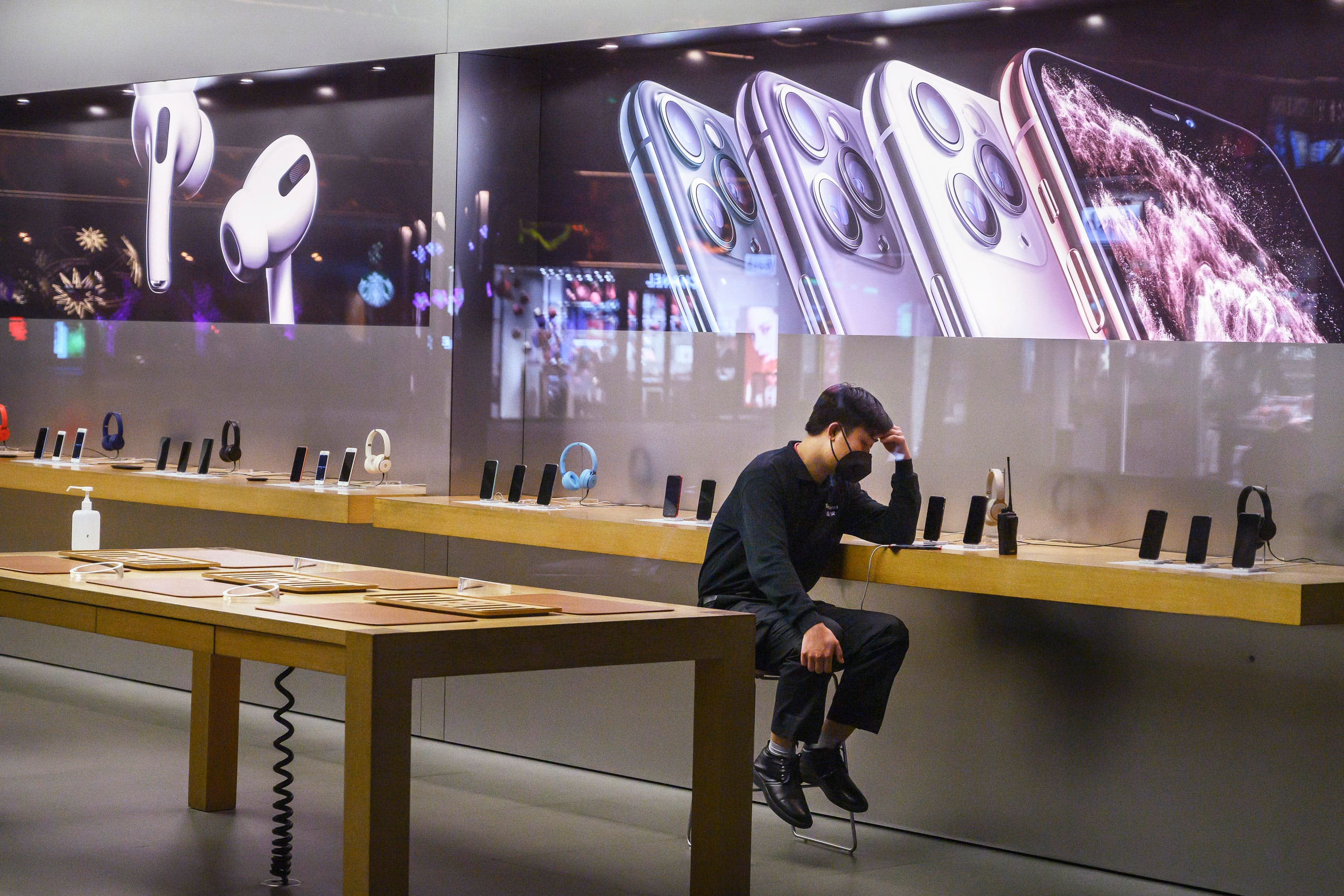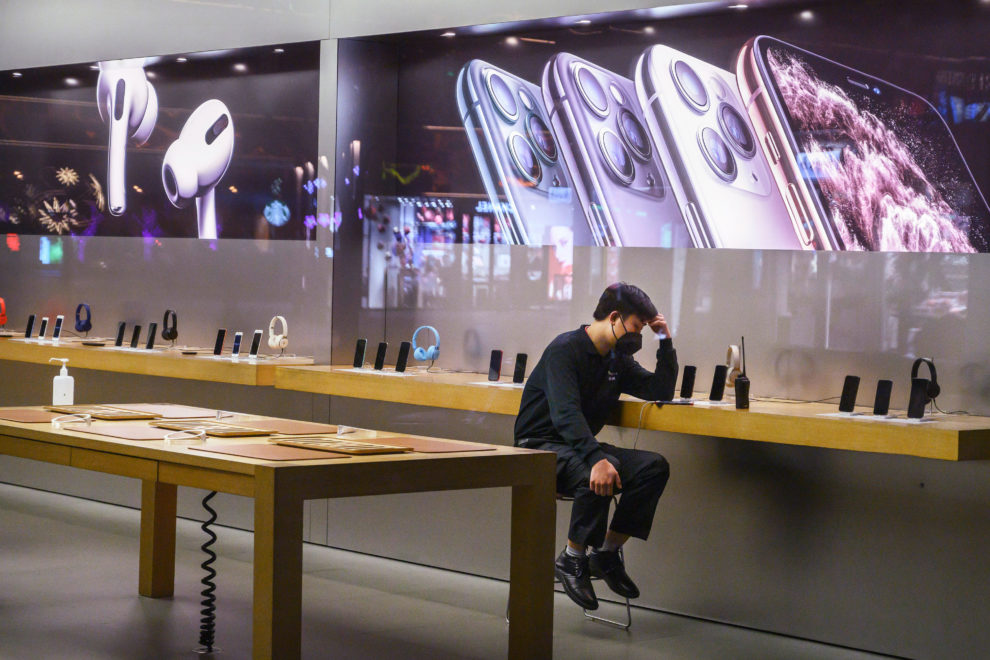
A Chinese employee wears a protective mask as he sits in the showroom of an Apple Store after it closed for the day on February 1, 2020 in a shopping district in Beijing, China.
Kevin Frayer | Getty Images
Apple said Monday that it does not expect to meet its quarterly revenue forecast because of lower iPhone supply globally and lower Chinese demand as a result of the coronavirus outbreak.
The company initially said that it expected to report net sales between $63 billion to $67 billion in its fiscal second quarter. Apple did not provide a new forecast for its fiscal second-quarter revenue on Monday.
The company said it provided a wider range than usual in late January, citing the uncertainty around the coronavirus outbreak.
“As you can see from the range, anticipates some level of issue there. Otherwise, we would not have a $4 billion range,” CEO Tim Cook said at the time.
Apple makes most iPhones and other products in China. The Coronavirus has caused it to temporarily halt production and close retail stores in China. Some Apple retail stores reopened in China with reduced schedules last week.
The company said Monday it is “experiencing a slower return to normal conditions than we had anticipated” after the extended Lunar New Year holiday. All iPhone manufacturing facilities in China have reopened, but Apple said it still expects supply shortages of the phone globally.
This is the second time in the last 13 months that Apple has had to cut its guidance due to concerns in China. In January 2019, Apple was forced to slash revenue guidance for its fiscal first quarter of 2019 due to weak iPhone sales in China.
Apple is widely expected to announce a new, cheaper iPhone model this spring. It’s unclear if the delays in China will affect that launch.
Read the full letter to investors that Apple released Monday:
As the public health response to COVID-19 continues, our thoughts remain with the communities and individuals most deeply affected by the disease, and with those working around the clock to contain its spread and to treat the ill. Apple is more than doubling our previously announced donation to support this historic public health effort.
Our quarterly guidance issued on January 28, 2020 reflected the best information available at the time as well as our best estimates about the pace of return to work following the end of the extended Chinese New Year holiday on February 10. Work is starting to resume around the country, but we are experiencing a slower return to normal conditions than we had anticipated. As a result, we do not expect to meet the revenue guidance we provided for the March quarter due to two main factors.
The first is that worldwide iPhone supply will be temporarily constrained. While our iPhone manufacturing partner sites are located outside the Hubei province — and while all of these facilities have reopened — they are ramping up more slowly than we had anticipated. The health and well-being of every person who helps make these products possible is our paramount priority, and we are working in close consultation with our suppliers and public health experts as this ramp continues. These iPhone supply shortages will temporarily affect revenues worldwide.
The second is that demand for our products within China has been affected. All of our stores in China and many of our partner stores have been closed. Additionally, stores that are open have been operating at reduced hours and with very low customer traffic. We are gradually reopening our retail stores and will continue to do so as steadily and safely as we can. Our corporate offices and contact centers in China are open, and our online stores have remained open throughout.
Outside of China, customer demand across our product and service categories has been strong to date and in line with our expectations.
The situation is evolving, and we will provide more information during our next earnings call in April. Apple is fundamentally strong, and this disruption to our business is only temporary. Our first priority — now and always — is the health and safety of our employees, supply chain partners, customers and the communities in which we operate. Our profound gratitude is with those on the front lines of confronting this public health emergency.





